Harman Kardon Citation Multibeam 1100 review: a single-box soundbar sensation
Looking for a one-box-does-it-all soundbar? Don't overlook HK's Citation Multibeam 1100, which is very accomplished for both movies and music alike


Despite its appealing but unassuming design and mouthful of a name, the Harman Kardon Citation Multibeam 1100’s great sound and impressive adaptability make it a genuine stand out even in a mid-range soundbar market already stuffed with talent.
-
+
Sounds excellent with movies
-
+
Sounds fantastic with music too
-
+
Attractively finished one-bar design
-
-
No significant rear channel effect without adding optional rears
-
-
Can’t sustain HDR with 4K/120Hz feeds
-
-
There’s no control app
Why you can trust T3

Having in the past collaborated with Samsung in establishing the South Korean brand’s formidable soundbar reputation, Harman Kardon has gone its own way of late by adding new soundbars to its Citation speaker range, including the Multibeam 1100 that we're focusing on in this review.
The Multibeam 1100 earns its name from its combination of 11 separate drivers and Harman’s proprietary approach to creating a convincing Dolby Atmos sound stage from a single soundbar component by bouncing multiple beams of sound off your walls. That means this one-box solution can deliver surround sound goods without eating up too much important physical space.
With a price tag that puts it in the same ballpark as Samsung’s HW-Q930B full surround soundbar package and the classic Sonos Arc, though, does the Citation Multibeam 1100’s impressive-sounding specification really translate into enough sound quality to mix it up with such illustrious company as one of the best soundbars you can buy? And with that Samsung connection is it also the best soundbar for Samsung TVs on a larger scale?
Citation Multibeam 1100: Price and release date
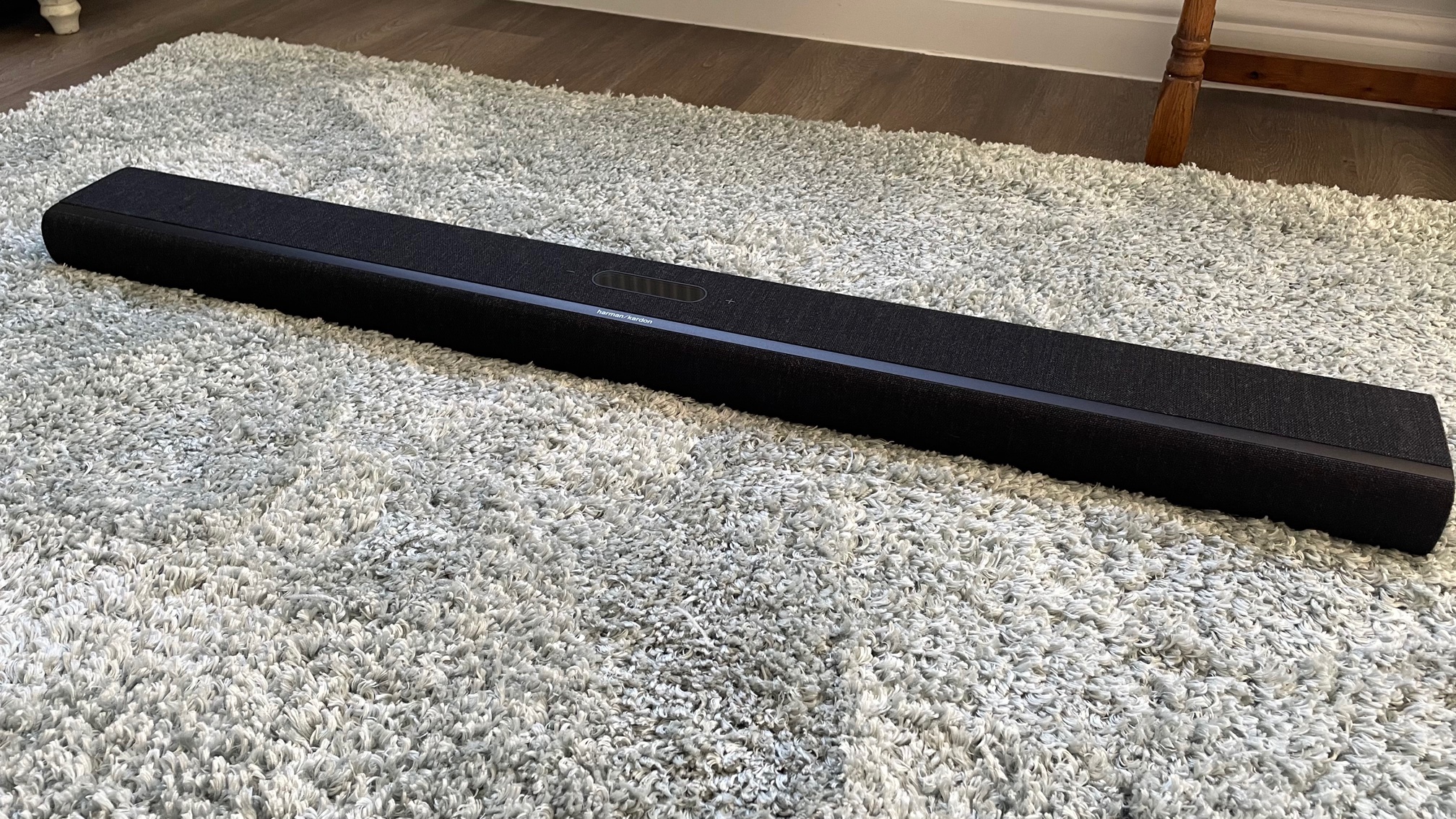
The Harman Kardon Citation Multibeam 1100’s £799.99 price in the UK puts it squarely at the mid-range level of today’s soundbar world. This means this single bar system finds itself up against a diverse range of stiff competition - including packages containing external subwoofers and rear speakers - from all sorts of well-known brands.
If you can live with less power and fewer drivers, the Harman Kardon’s Citation Multibeam 700 can be yours for less than half the price of the 1100. Check out the widget below to see what you make of that price comparison.
Harman Kardon Multibeam 1100 review: Features and what's new?
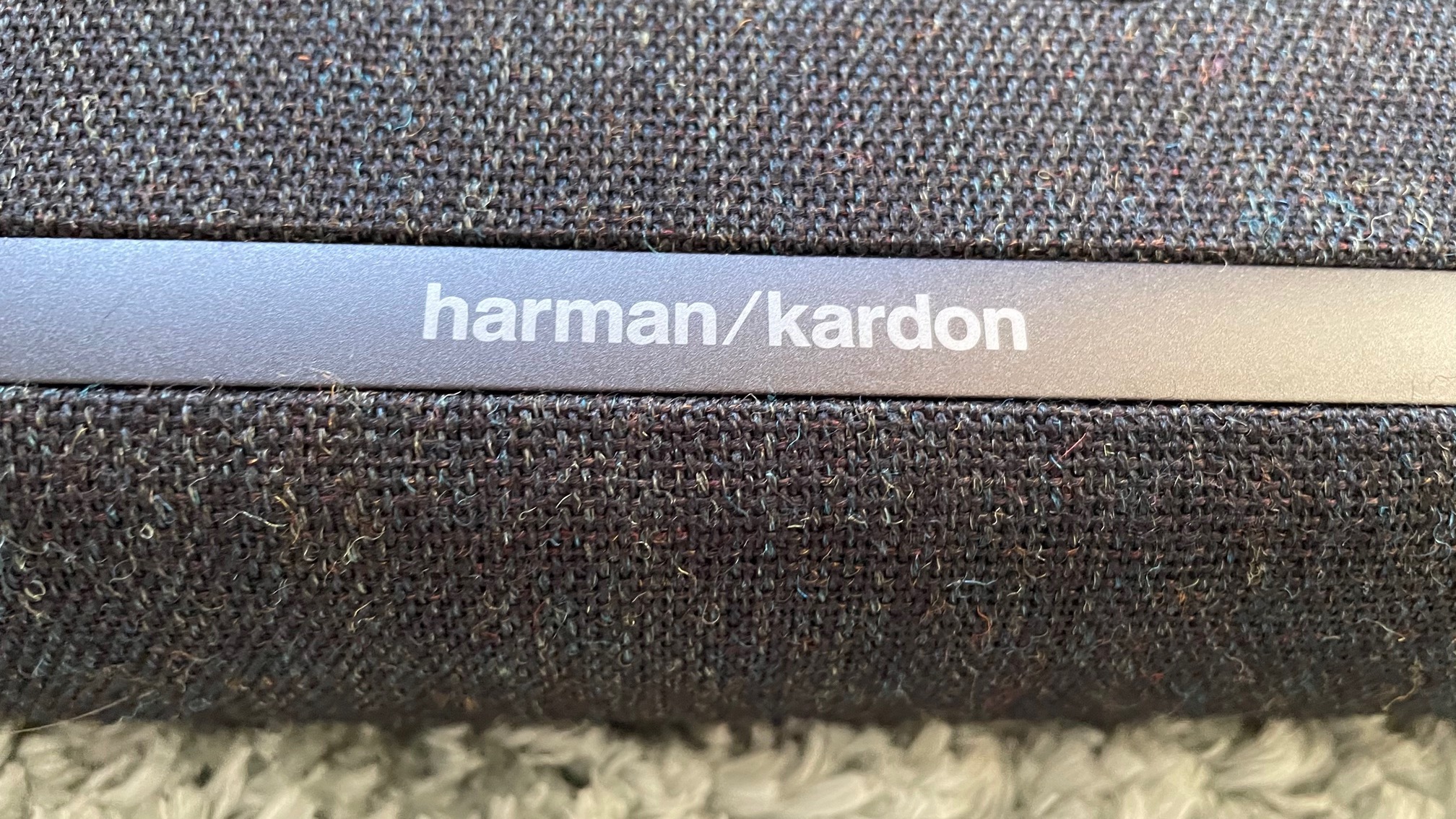
The Multibeam 1100’s main justification for its moderately premium price tag is its combination of 11 separate drivers and Multibeam technology for dispersing sound more widely around your room - both of which are seriously promising features to find on a single-bar solution.
The individual speaker breakdown includes eight 60W woofers with three full-range 50W tweeters, six ‘racetrack’ drivers with three 1-inch tweeters, and two 2.75-inch up-firing drivers. This adds up to a potent (especially for a single bar solution) total output of 650W.
Get all the latest news, reviews, deals and buying guides on gorgeous tech, home and active products from the T3 experts
The up-firing drivers alert us right away to the fact that the Multibeam 1100 supports Dolby Atmos object-decoding sound. Something we’re increasingly starting to expect as standard now from mid-range soundbars. There’s no accompanying DTS:X support, though, which is a shame given how many 4K Blu-ray and Blu-ray sources use this format rather than Dolby Atmos.
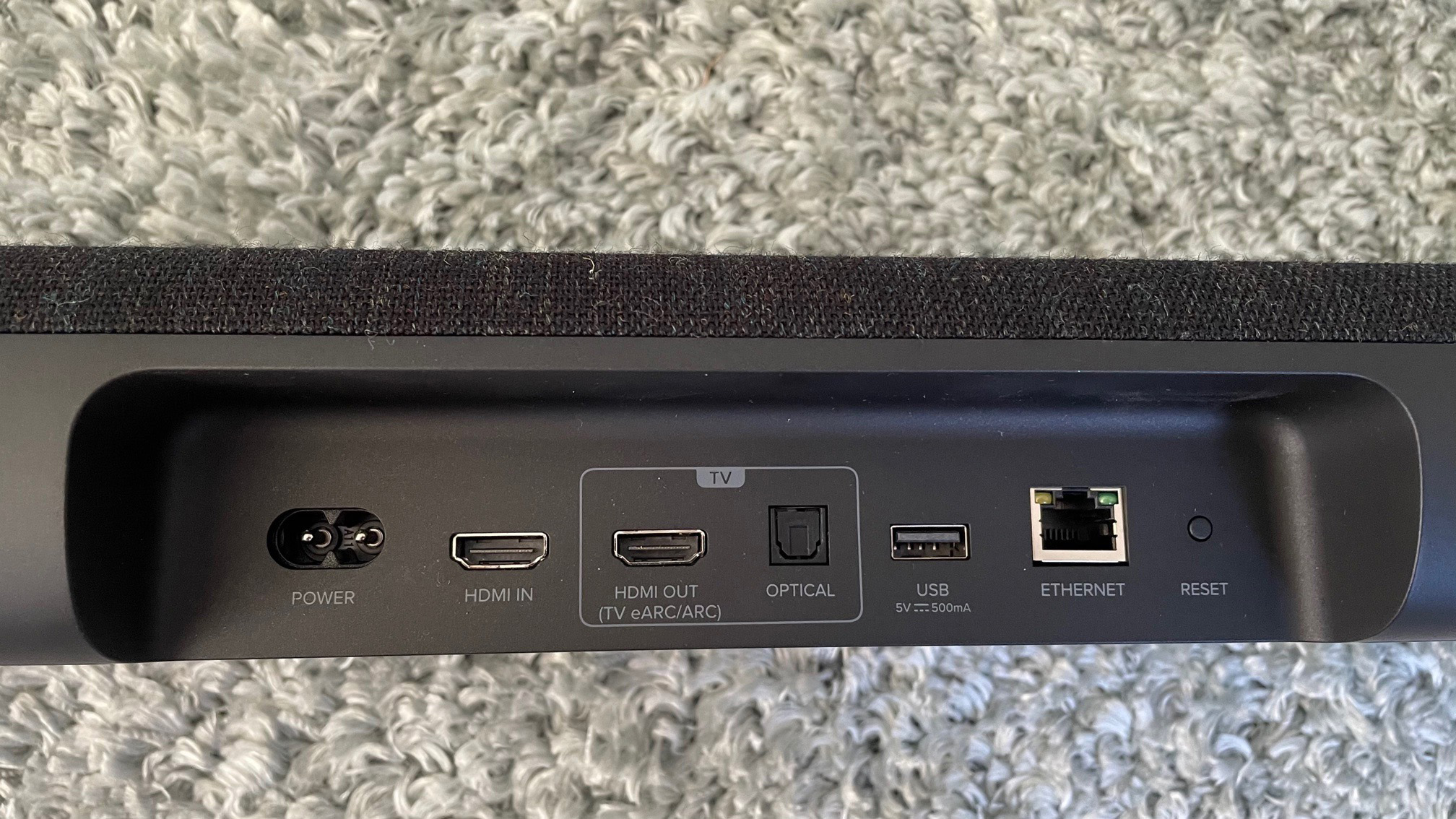
The Citation Multibeam 1100’s connectivity is slightly better than expected thanks to its provision of an HDMI loop through. Quite a number of single-bar soundbars from relatively hi-fi oriented brands skip HDMI loop through support, leaving you having to depend on HDMI ARC (audio return channel) technology to deliver a convincing sound performance. Which is fine so long as your particular AV system doesn’t happen to fall foul of the audio sync issues that can crop up when using ARC.
Being able to attach a source directly via HDMI input to the soundbar so that sound can be extracted before pictures are passed on to your TV via the HDMI output should remove all audio sync issues. The loop through is also essential, of course, for anyone who owns a TV that doesn’t support ARC over HDMI (though most reasonably modern ones do), or that can’t pass on Dolby Atmos sound over their ARC systems.
The Citation Multibeam 1100 does, to be clear, support ARC as well as carrying support for a single HDMI loop through. In fact, handily given that it can play Dolby Atmos soundtracks, it supports the wider bandwidth eARC system that allows TVs to pass on lossless Dolby Atmos soundtracks (the older ARC system only supports compressed Dolby Atmos pass-through).
Unexpectedly we managed to get the Multibeam 1100’s HDMI loop passing through 4K/120Hz and variable refresh rate (VRR) gaming signals from our Xbox Series X and PS5 consoles. Unfortunately, running 4K/120Hz through the loop through causes Xbox Series X feeds to lose their HDR support; this only comes back online if you set the console to output 4K/60Hz or 1080p/120Hz.
So while getting any 120Hz or VRR support at all via a soundbar loop through is a pleasant surprise, owners of the latest gaming consoles and high-end PCs who want the full 4K/120Hz/HDR monty will still need to connect their gaming devices directly to their TVs (assuming those TVs support 4K/120Hz and VRR) and send the game audio on to the soundbar via HDMI eARC.
The HDMI loop through does, though, support premium Dolby Vision and HDR10+ HDR signals, as well as the industry standard HDR10 system. It’s good to see Harman Kardon not following so many other brands in ignoring HDR10+.
As well as its physical connections, the Multibeam 1100 inevitably supports both Wi-Fi and Bluetooth file sharing. This extends to Apple AirPlay, built-in Chromecast support, and Alexa Multi-Room Music - all of which open the door to more than 300 online music streaming services.
Wrapping the key features up are a proprietary PureVoice technology for enhancing dialogue at any volume, and the optional ability to partner the Multibeam 1100 with Citation separates such as the Sub S subwoofer and Citation Surround speakers to create a potential 5.1.2 system.
Citation Multibeam 1100 review: Sound quality

Unusually for a soundbar review, I’m going to kick this section off by discussing its music performance. Simply because it’s so darned lovely.
I’ve become rather used in recent times to listening to massively muscular soundbars that smash it with movie soundtracks but just don’t seem to know how to convert their movie prowess into something that sounds convincing with good old stereo music. The Multibeam 1100, though, nails music of all types - and, even more surprisingly, at all sorts of volume levels, too.
Its sense of musicality really is gorgeous for a mid-range soundbar. It retains a balance between the elements of any musical mix you throw at it, regardless of how dense and layered that mix might be. In fact, the denser and more ‘difficult’ a mix might be, the more you can appreciate just how good the Multibeam 1100 sounds.
Every element is rendered with precision and clarity, but without any element gaining undue prominence or causing any part of the speakers’ design the sort of difficulties that might cause you to become distracted from full immersion in whatever you’re listening to.
Male and female vocals alike are positioned and handled with aplomb, never becoming either peaky or submerged, and the soundstage is cast beautifully to left and right without losing cohesion or sounding forced. There’s an effectively handled sense of verticality in the mix too, especially if you play music using the available Smart Sound ‘pseudo surround’ music option.
Detailing with music is extremely impressive without becoming excessive, and as a further testament to the Multibeam 1100’s appreciation for music, even the Smart Sound option is typically a pleasure to listen to if you’re not too much of a purist to give it a try.
If I had to be really, really picky, while the Multibeam 1100’s music performance is hard to fault in stereo mode for a soundbar of its price level, in Smart Sound mode shrill elements at the top of a dense mix can become a touch harsh at high volumes. But if you find this bothering you, just turn Smart Sound off.
While the Multibeam 1100’s music prowess is great news for hi-fi fans, does it mean that the soundbar is compromised as a movie performer? Actually, no. For starters, it picks up where the music left off in being able to pick out phenomenal amounts of subtle fine detail in any movie mix that actually bothers to put such fine detailing in. This stellar clarity injects more life into a film’s world than most soundbars are able to manage - and it’s notable again, too, how well the Multibeam 1100 retain this sense of detail and ‘life’ even at fairly low volumes.
As well as being exceptionally clean and defined, the details in a good Dolby Atmos mix are also placed with impressive precision for a single-unit soundbar. I wouldn’t say there’s any sense of sound coming from behind you, so you only get the front half of the familiar Dolby Atmos sound ‘hemisphere’. But the sound swells up, sideways and forward with impressive energy and scale, filling the front half of even a large room with a three-dimensional audio space packed with precisely placed details that benefit from height as well as width.
The soundbar’s up-firers manage to achieve a proper sense of overhead sound at times, which is rare even for Dolby Atmos soundbars that carry up-firing drivers on their top edge.
Another very pleasant surprise is how much bass the Multibeam 1100 can deliver. Huge amounts of air are shifted out of the soundbar’s rear (as evidenced by the cloud of dust that blew up when Blade Runner 2049 hit its first massive Dolby Atmos bass drop), and the woofers are flexible enough to shift all that air without breaking down into crackling, phutting or drop-out as they go about underpinning films with properly cinematic levels of rumble.
During the movie world’s most outrageous bass moments things can start to rattle a bit, but after putting my hand on various bits of furniture and the TV stand, the only residual rattling left that could fairly be laid at the soundbar’s door was actually pretty minor.
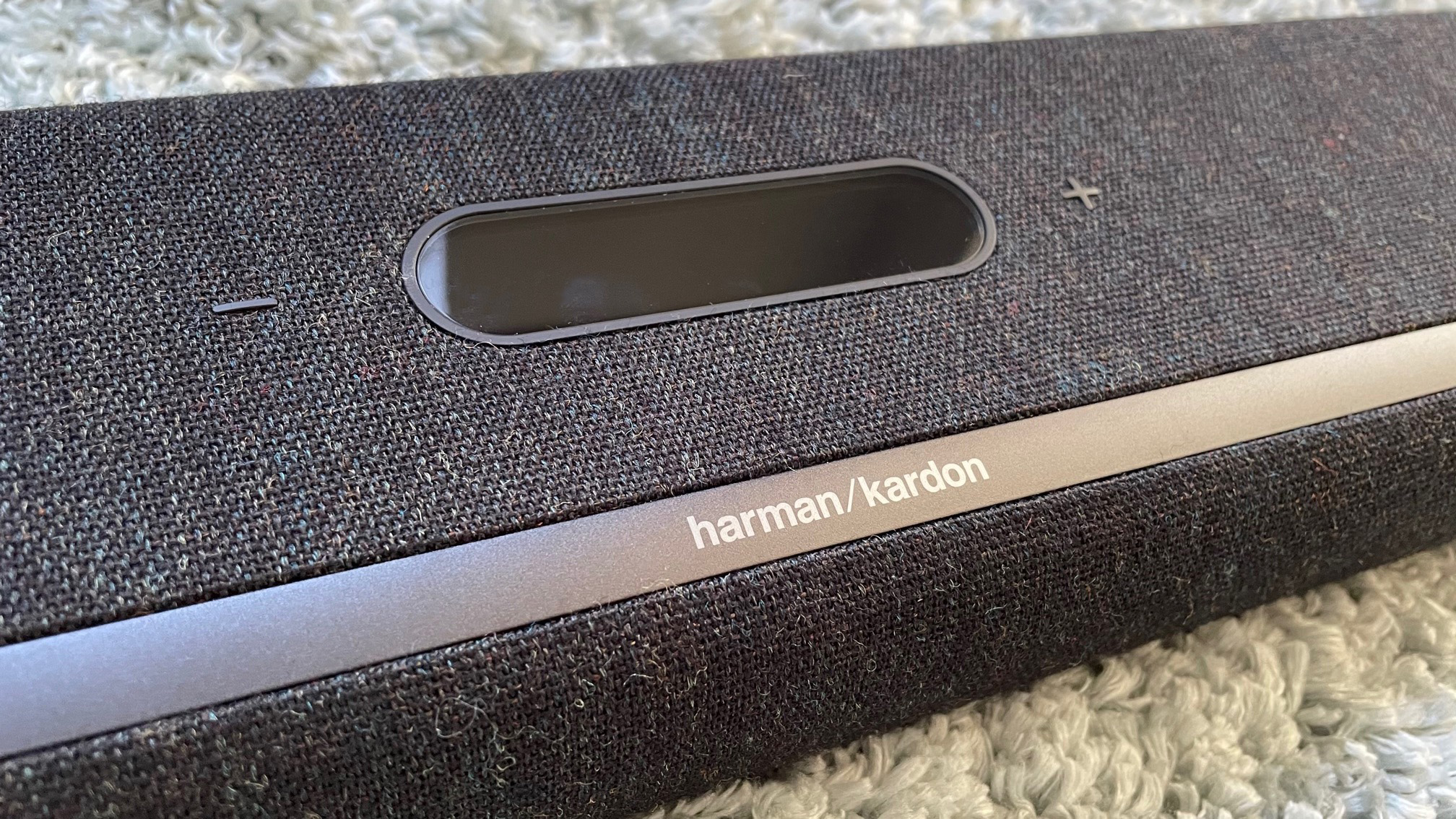
It’s worth thinking back at this point to the Multibeam 1100’s music performance, to reflect on just how well it manages to adapt its integrated bass to the typically very different demands of music and movies, adeptly avoiding one of the most common soundbar pitfalls.
Also hard to reconcile with the refinement of the Multibeam 1100’s music abilities is the brutal impact it’s able to force out of its refined form when required, ensuring that heavy punches, explosions, car crashes and so on hit hard enough to make you wince. In a good way.
Score work is handled deftly, without muddiness or dominance, and manages to sound like it exists somewhere ‘beyond’ the main onscreen action sound effects - exactly as it should.
Dialogue is clear but also convincingly contextualised even under pressure from a dense backing mix, and the sound appears to have been slightly lifted to stop dialogue sounding as if it’s coming from below the onscreen action.
Aside from the inevitable lack of rear soundstage action (which, don’t forget, you could rectify by adding other Citation speakers as an option as and when finances allow), the Multibeam 1100’s movie performance isn’t much easier to find fault with than its musical performance. Just occasionally a sudden rather than sustained bass effect can sound slightly boxed in and coarse. An issue which can also cause percussive movie scoring or songs to sound a touch dirgy on occasion.
Male voices sometimes sound a little locked to the soundbar’s centre, rather than appearing to the left or right side as they ideally would. Also, finally, there’s more muscularity and raw power to be had from ‘beast mode’ soundbars like Samsung Q990B, Devialiet’s Dione and the Sennheiser Ambeo, too. All of those models cost way more than the Multibeam 1100, though - for its money the Multibeam 1100 is as good a single component soundbar as I’ve heard.
Harman Kardon Multibeam 1100 review: Design and usability

The Multibeam 1100 is more attractive than your average soundbar. Its dimensions of 1,150(W) x 65(H) x 130(D)mm should enable it to tuck comfortably under most of today’s best TVs, and it wears those dimensions particularly well thanks to its rounded corners and edges, cool open ends (through which some of the soundbar’s audio ‘beams’ fire), and real-wool Kvadrat finish. This rich fabric cover for the top and front edges is available to buy in either black or grey options, too.
Aside from a smooth ‘seam’ containing the Harman Kardon logo between the curved front edge and the flat top edge, the only thing breaking the uniform, premium finish is an unusually large and gorgeously high-resolution LED at roughly the centre of the top edge. As well as providing information on the sound format you’re listening to, this provides clear, touch-responsive icons so that you can control the bar without needing the remote control. Honestly, the Multibeam 1100’s LED may be the loveliest such display I’ve ever seen - and as such it joins the Kvadrat finish in giving the soundbar a truly premium feel.
There is, though, one rather large problem with the gorgeous display: it’s in the wrong place. Putting it on top of the soundbar rather than on its front means you can’t see what it’s saying when you’re sat down on your sofa. To be fair, I can see Harman Kardon’s dilemma here; control buttons are generally best placed on top of a soundbar, so if you’ve made those ‘digital’, within the LED, you’ve suddenly given yourself a tough decision about whether you put the LED on the front of the soundbar where people can read the information it’s showing without having to stand up, or on top for easier manual feature selection.
For me, though, being able to see what’s going on during day to day use of the soundbar trumps manual feature selection every time. Harman Kardon has at least shown some awareness of the difficulties it’s created by putting a small row of lights behind the fabric on the soundbar’s bottom edge that give you a basic indication of volume and source selection. This was not enough, though, to stop me from having to get up off my butt far more often in the course of this review than I would like.
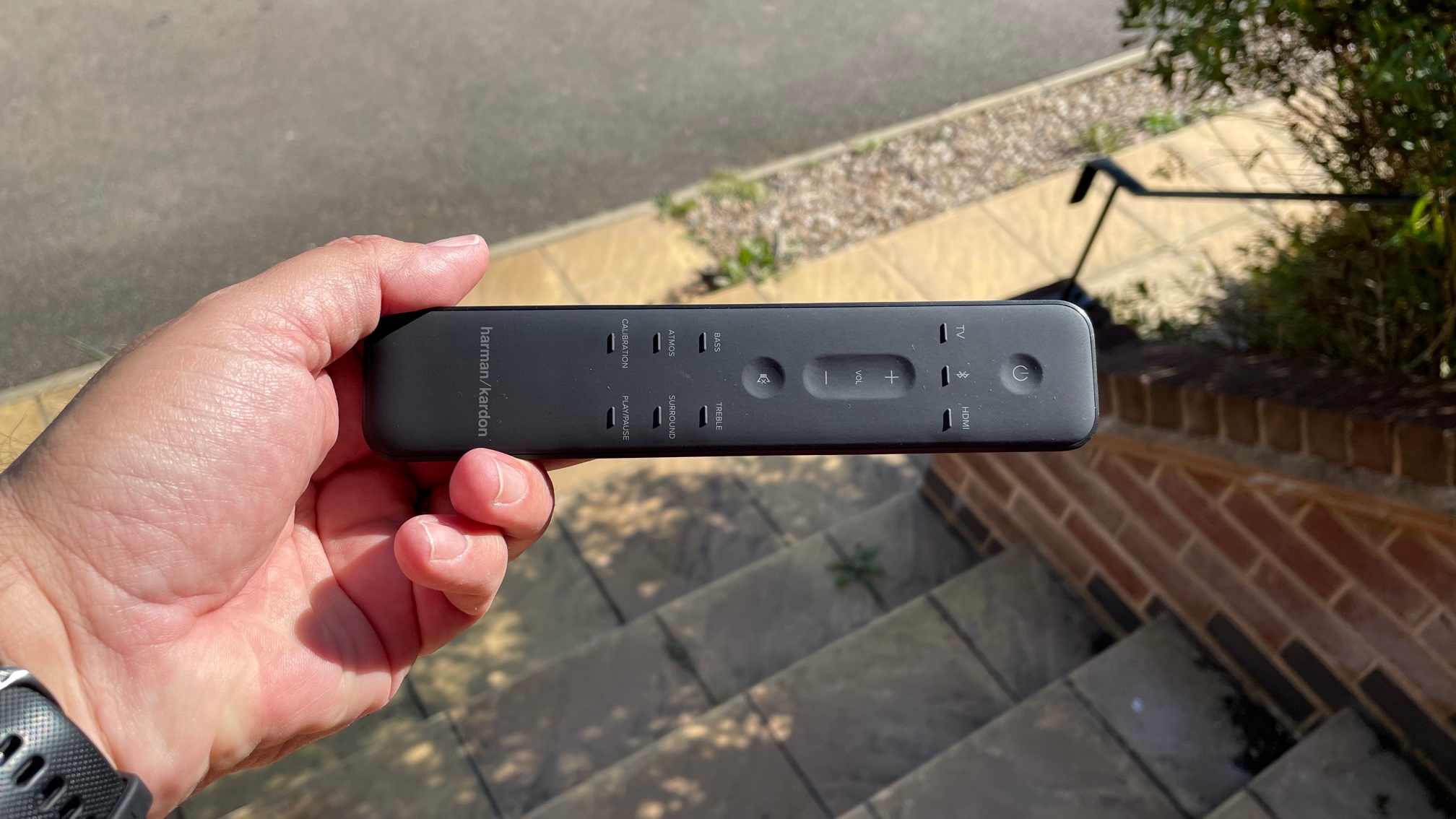
Shiny, digital and cool though the Multibeam 1100’s on-bar controls might be, it’s still a relief to find it shipping with a remote control handset. This again looks and feels pretty cool, with its mixture of recessed and raised buttons and ultra-minimalist styling. Unfortunately, though, it’s something of a case of form over function, as the button labels are so small many people will need a magnifying glass to read them, and some of the buttons themselves, while raised, are also so small that they’re seriously hard to find in a darkened movie room.
Given the Multibeam 1100’s mixture of control issues, it’s a pity that there’s no app control option of the sort now provided by most other recently released soundbars.
While its over-hip remote and unhelpfully placed LED make the Multibeam 1100 far from the easiest soundbar to handle, I can finish this section on a positive note by saying that it does carry a very effective built-in auto-calibration system to save you the trouble of having to muck about with lots of manual sound stage corrections.
HK Citation Multibeam 1100 review: Verdict

While the Harman Kardon Citation Multibeam 1100 might not have the catchiest sounding name, its sound is very catchy indeed.
With movies it delivers levels of dynamic range, power, effects placement and detailing that are rare indeed for a sub-£1K single bar solution, yet unusually for the midrange soundbar world, it’s able to turn its hand equally adeptly to music.
Yes, it’s missing a couple of feature tricks and isn’t the easiest soundbar to use, but all-round sound quality this strong is just too good to pass up.
Also consider
As a single box solution the Harman Kardon is very accomplished, then, but if you want a similar priced yet more surround focused 'bar then the Samsung HW-930B comes with a separate subwoofer that gives even more low-end grunt, a pair of separates in the package too, and, when paired with suitable Samsung Q Symphony TVs, will give an even more connected-to-the-screen soundstage for movies.
John Archer has been testing TVs and AV gear for over 25 years, having worked on Home Cinema Choice magazine. He's a contributor to Forbes, TechRadar, Trusted Reviews, Wired and many more places – if you've owned a TV in the last couple of decades, John's probably reviewed it somewhere. He's seen so many hot new technologies come and go, like tears in the rain.
